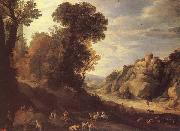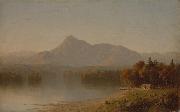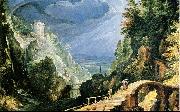Wholesale Oil Painting No Minimum |
|||||||||||
|
|
|||||||||||

|
|||||||||||
|
|
|
||||||||
Hercules Seghers1590-1638 Dutch Hercules Seghers Gallery Hercules Pieterszoon Seghers or Segers (c. 1589 ?C c. 1638) was a Dutch painter and printmaker of the Dutch Golden Age. Segers is in fact the more common form in contemporary documents, and was used by the painter himself (modern use is about equally divided between the two). He was "the most inspired, experimental and original landscapist" of his period and an even more innovative printmaker. He was probably best known to his contemporaries for his paintings of landscapes and still-life subjects; his paintings are also rare, with perhaps only fifteen surviving (one was destroyed in a fire in October 2007 ). The Stadholder, Frederick Henry, Prince of Orange bought landscapes in 1632. Many of his painted landscapes are fantastic mountainous compositions, whereas in his prints it is often the technical approach rather than the subject which is extreme. His painted landscapes tend to show a wide horizontal view, with emphasis on earth rather than sky; two in the Gemäldegalerie, Berlin had strips of sky added at the top later in the century to meet a changed taste. Apart from Coninxloo, Seghers drew from the Flemish landscape tradition, perhaps especially Joos de Momper and Roelandt Savery, but also the "fantastic and visionary aspects of Mannerist" landscape painting. A 1680 inventory of Jan van der Capelle, who owned five paintings by Seghers, describes one as view of Brussels, which if correct would presumably mean Seghers travelled there, probably when young, when his style shows most Flemish influence (in so far as the chronology of his work is clear). |
||||||||
|
|
||||||||
Mountain Landscape
Mountain Landscape Painting ID:: 3870 |
1620-30
Galleria degli Uffizi, Florence
1620-30 Galleria degli Uffizi, Florence |
|||||||
|
|
||||||||
Barend Cornelis Koekkoek1803-1862 Dutch Barend Cornelis Koekkoek Gallery Koekkoek??s own paintings reveal a careful study and synthesis of Dutch seventeenth century painters. His art is firmly rooted in the great Dutch romantic tradition established by the seventeenth-century masters: Hobbema, Cuyp, Ruisdael and Wynants. The golden light and the inclusion of travellers in his work suggests Koekkoek also admired the Dutch Italianate painters of the seventeenth century, collectively known as the Bamboccianti, especially Pieter van Laer and Jan Both. Koekkoek imagined his pictures as the result of an ideal combination of observation and artifice. He studied art and nature with equal acuity, creating beautiful landscape paintings that celebrated the greatness of Creation. ??Koekkoek's work impresses the spectator by its power, by the firm and correct construction of the trees, by the broad, natural growth of the leaves and boughs, [and] by the careful and elaborate reproduction of the wooded landscape?? (G. H. Marius, Dutch Painters of the Nineteenth Century, Woodbridge, 1973, p. 89). Up to this day, Willem Koekkoek's work is very much favoured for the lively composition and the mood of nostalgia, in which the Dutch Golden Age seems to linger on. Just as he was during his own lifetime, Koekkoek is widely regarded as the most accomplished landscape painter of Dutch romanticism, against whose scrupulously refined paintings the work his contemporaries is measured. |
||||||||
|
|
||||||||
|
|
Mountain Landscape
Mountain Landscape Painting ID:: 29241 |
mk65
1626
Oil on canvas
29 1/2x40 1/2'
mk65 1626 Oil on canvas 29 1/2x40 1/2' |
||||||
|
|
||||||||
Sanford Robinson Gifford1823-1880 Sanford Robinson Gifford (July 10, 1823 ?C August 29, 1880) was an American landscape painter and one of the leading members of the Hudson River School. Gifford's landscapes are known for their emphasis on light and soft atmospheric effects, and he is regarded as a practitioner of Luminism, an offshoot style of the Hudson River School. Returning to his studio in New York City, Gifford painted numerous major landscapes from scenes he recorded on his travels. Gifford's method of creating a work of art was similar to other Hudson River School artists. He would first sketch rough, small works in oil paint from his sketchbook pencil drawings. Those scenes he most favored he then developed into small, finished paintings, then into larger, finished paintings. |
||||||||
|
|
||||||||
|
|
Mountain Landscape
Mountain Landscape Painting ID:: 72997 |
"Mountain Landscape," oil on canvas, by the American artist Sanford Robinson Gifford. 10 in. x 20 in. Yale University Art Gallery, gift of Teresa Heinz in memory of her husband H. John Heinz III, B.A. 1960. Courtesy of Yale University, New Haven, Conn.
cjr "Mountain Landscape," oil on canvas, by the American artist Sanford Robinson Gifford. 10 in. x 20 in. Yale University Art Gallery, gift of Teresa Heinz in memory of her husband H. John Heinz III, B.A. 1960. Courtesy of Yale University, New Haven, Conn. cjr |
||||||
|
|
||||||||
Paul BrilFlemish Baroque Era Painter, ca.1554-1626 Paul (1554-1626) and Mattheus (1550-1583) Brill (or Bril) were brothers, both born in Antwerp, who were landscape painters who worked in Rome after earning papal favor. They are also described as painters of capricci (whims or fancies) or vedute ideate or veduta di fantasia, with typical rustic hills with a few ruins. Mattheus began work on several frescoes in Rome from 1570 onwards, and his work includes the Vatican Seasons. Mattheus died young, and his brother continued his work around 1574. Paul painted frescoes such as the landscapes in the Casino Rospigliosi (Rome), and The Roman Forum, which showed this site for what it had become: a slum for squatters and pasture for livestock (so much so that the place was nicknamed Campo Vaccino, or The Cowfield). His masterpiece may be a fresco in the Clementine Hall of the Vatican. Paul also did engravings and small cabinet paintings on copper, some of which are signed with a pair of spectacles (a pun on the French word brilles, spectacles). Some of these were collaborations with Johann Rottenhammer, who according to a dealer letter of 1617 painted the figures in Venice and then sent the plates to Rome for Bril to complete the landscape. He collaborated with his friend Adam Elsheimer, who he both influenced and was influenced by, on one painting (now Chatsworth House) |
||||||||
|
|
||||||||
|
|
Mountain landscape
Mountain landscape Painting ID:: 92985 |
(1590-1599)
Medium oil on copper
Dimensions 11.8 X 17.5 cm (4.6 X 6.9 in)
cjr (1590-1599) Medium oil on copper Dimensions 11.8 X 17.5 cm (4.6 X 6.9 in) cjr |
||||||
|
|
||||||||
|
Paul Bril Flemish Baroque Era Painter, ca.1554-1626 Paul (1554-1626) and Mattheus (1550-1583) Brill (or Bril) were brothers, both born in Antwerp, who were landscape painters who worked in Rome after earning papal favor. They are also described as painters of capricci (whims or fancies) or vedute ideate or veduta di fantasia, with typical rustic hills with a few ruins. Mattheus began work on several frescoes in Rome from 1570 onwards, and his work includes the Vatican Seasons. Mattheus died young, and his brother continued his work around 1574. Paul painted frescoes such as the landscapes in the Casino Rospigliosi (Rome), and The Roman Forum, which showed this site for what it had become: a slum for squatters and pasture for livestock (so much so that the place was nicknamed Campo Vaccino, or The Cowfield). His masterpiece may be a fresco in the Clementine Hall of the Vatican. Paul also did engravings and small cabinet paintings on copper, some of which are signed with a pair of spectacles (a pun on the French word brilles, spectacles). Some of these were collaborations with Johann Rottenhammer, who according to a dealer letter of 1617 painted the figures in Venice and then sent the plates to Rome for Bril to complete the landscape. He collaborated with his friend Adam Elsheimer, who he both influenced and was influenced by, on one painting (now Chatsworth House) Mountain landscape (1590-1599) Medium oil on copper Dimensions 11.8 X 17.5 cm (4.6 X 6.9 in) cjr |
||||||||
|
|
||||||||
|
Prev Next
|
||||||||
|
|
||||||||
|
Related Paintings to Paul Bril :. |
||||||||
|
|
||||||||
|
CONTACT US |




